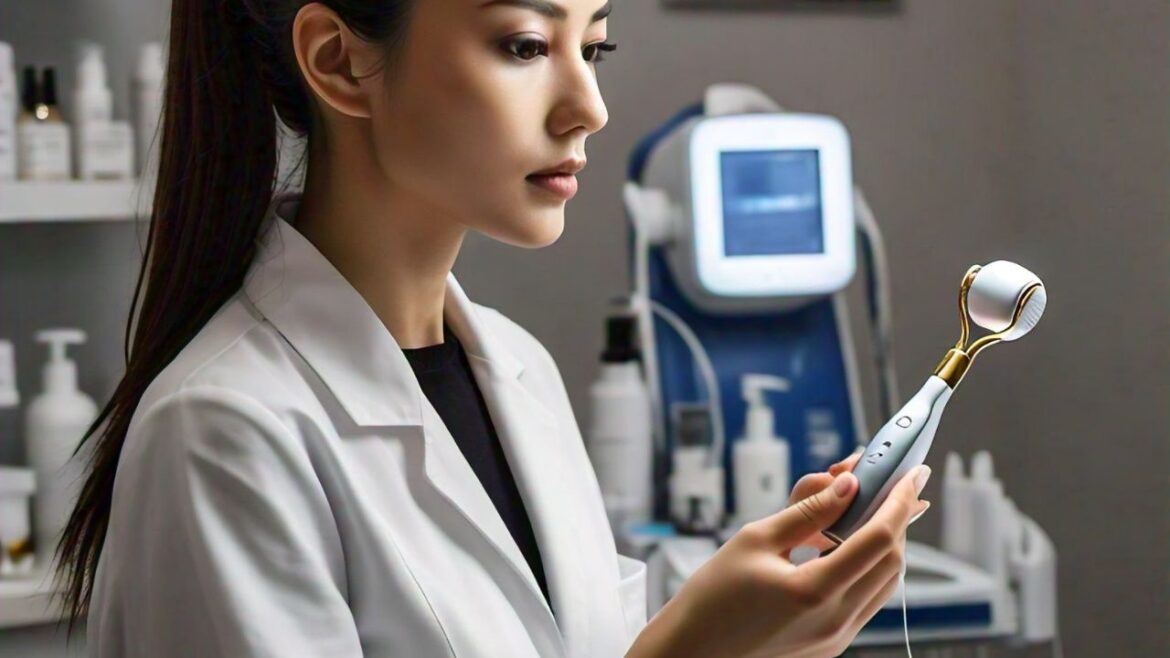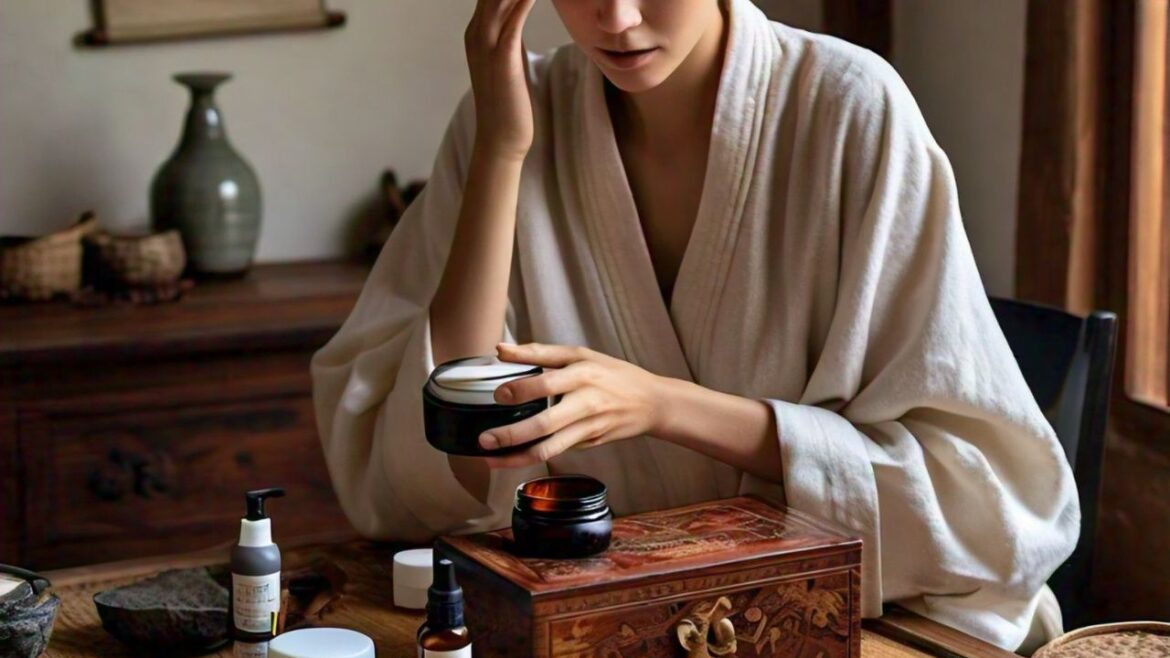Skincare Tools and Gadgets: Do They Really Work?
https://icdrc.org/wp-content/uploads/2024/06/WhatsApp-Image-2024-06-23-at-5.37.53-AM-1024x1024.jpeg 1024 1024 admin admin https://secure.gravatar.com/avatar/693ccb227eb6527287caaa4e9eb13c6e?s=96&d=mm&r=gSkincare Tools and Gadgets: Do They Really Work?
The beauty industry is continuously evolving, and in recent years, skincare tools and gadgets have become increasingly popular. From jade rollers and gua sha stones to high-tech devices like LED masks and microcurrent machines, these tools promise a wide array of benefits, from reducing wrinkles to improving skin texture. But do they really work? In this comprehensive guide, we will explore various skincare tools and gadgets, examine the science behind them, and provide insights into their effectiveness.
The Rise of Skincare Tools and Gadgets
The Trend Toward At-Home Skincare
The demand for at-home skincare solutions has grown significantly, fueled by the convenience they offer and the desire for spa-like treatments without leaving the house. Innovations in technology and an increased focus on self-care have also contributed to this trend, making advanced skincare tools more accessible to the average consumer.
Social Media Influence
Platforms like Instagram, YouTube, and TikTok have played a crucial role in popularizing skincare tools. Influencers and beauty gurus frequently showcase these gadgets in their routines, sparking curiosity and encouraging their followers to try them out.
Popular Skincare Tools and Gadgets
Jade Rollers and Gua Sha Stones
History and Origin
Jade rollers and gua sha stones have been used in Traditional Chinese Medicine for centuries. These tools are made from jade or other stones like rose quartz and are believed to promote healing and balance within the body.
How They Work
- Jade Rollers: Jade rollers are handheld tools with a smooth, cylindrical stone that is rolled over the skin. They are typically used to reduce puffiness, improve circulation, and enhance product absorption.
- Gua Sha Stones: Gua sha involves scraping the skin with a flat, rounded stone to stimulate blood flow and lymphatic drainage. This technique is said to relieve tension, reduce inflammation, and promote a healthier complexion.
Effectiveness
While there is limited scientific evidence to support the dramatic claims made about jade rollers and gua sha stones, many users report temporary improvements in skin appearance, such as reduced puffiness and a more refreshed look. The massaging action can indeed improve circulation and help with lymphatic drainage, providing a temporary glow.
LED Light Therapy Masks
How They Work
LED light therapy masks use different wavelengths of light to target various skin concerns:
- Red Light: Promotes collagen production, reducing wrinkles and fine lines.
- Blue Light: Kills acne-causing bacteria and helps manage breakouts.
- Green Light: Targets pigmentation and evens out skin tone.
Scientific Backing
There is a substantial amount of research supporting the effectiveness of LED light therapy. Red light has been shown to boost collagen production and reduce inflammation, while blue light is effective in treating mild to moderate acne. However, the results can vary based on the device’s quality and the consistency of use.
Microcurrent Devices
How They Work
Microcurrent devices deliver low-level electrical currents to the skin, mimicking the body’s natural electrical currents. These devices are said to:
- Stimulate facial muscles
- Boost collagen and elastin production
- Improve facial contour and reduce wrinkles
Scientific Backing
Microcurrent therapy has been used in physical therapy for decades to treat muscle pain and improve wound healing. In skincare, studies have shown that microcurrent can improve facial muscle tone and enhance skin appearance. Consistent use is key to achieving noticeable results, and while the effects are not as dramatic as surgical procedures, many users see a firmer, more lifted appearance over time.
Derma Rollers and Microneedling Pens
How They Work
Derma rollers and microneedling pens use tiny needles to create micro-injuries in the skin. This process is believed to:
- Stimulate collagen and elastin production
- Improve skin texture and tone
- Reduce the appearance of scars, wrinkles, and large pores
Scientific Backing
Numerous studies support the efficacy of microneedling for improving various skin concerns. The controlled injuries prompt the skin’s natural healing process, leading to increased collagen production and improved skin texture. However, it is crucial to use these tools correctly to avoid potential side effects like infection or scarring.
Facial Steamers
How They Work
Facial steamers emit a stream of warm steam to the face, which is believed to:
- Open pores and loosen dirt and impurities
- Enhance product absorption
- Improve circulation and hydration
Effectiveness
Facial steaming can indeed help open pores and make it easier to remove blackheads and other impurities. It also promotes relaxation and can improve hydration if followed by the application of moisturizing products. However, overuse can lead to dryness and irritation, so it’s essential to use facial steamers in moderation.
Ultrasonic Skin Scrubbers
How They Work
Ultrasonic skin scrubbers use high-frequency vibrations to:
- Exfoliate dead skin cells
- Deep clean pores
- Enhance the penetration of skincare products
Scientific Backing
Ultrasonic technology is well-established in the medical field, and its application in skincare shows promise. These devices can effectively exfoliate and cleanse the skin, providing a smoother texture and improved product absorption. However, consistent and correct use is necessary to achieve the best results.
Factors to Consider When Choosing Skincare Tools and Gadgets
Skin Type and Concerns
Different tools are better suited for different skin types and concerns. For example:
- Sensitive Skin: Opt for gentle tools like jade rollers and avoid aggressive treatments like microneedling.
- Acne-Prone Skin: LED light therapy with blue light can be beneficial.
- Aging Skin: Microcurrent devices and red LED light therapy can help reduce wrinkles and improve firmness.
Quality and Brand Reputation
Investing in high-quality tools from reputable brands ensures safety and effectiveness. Cheap, poorly made gadgets can cause skin damage or fail to deliver promised results.
Instructions and Usage
Proper usage is crucial for achieving the desired results and avoiding adverse effects. Always follow the manufacturer’s instructions and consult with a dermatologist if you are unsure about using a particular tool.
Consistency
Consistency is key when using skincare tools. Most devices require regular use over weeks or months to see noticeable improvements. Be patient and stick to a routine to achieve the best outcomes.
Potential Risks and Precautions
Skin Irritation and Damage
Improper use of skincare tools can lead to skin irritation, redness, and even scarring. It is essential to understand how to use each device correctly and start slowly, especially if you have sensitive skin.
Infection
Tools that puncture the skin, like derma rollers and microneedling pens, carry a risk of infection if not properly sterilized. Always clean and disinfect these tools before and after each use.
Exaggerated Claims
Be wary of exaggerated claims made by some brands and influencers. While many tools can improve skin appearance, they are not miracle cures and will not produce surgical-level results.
Expert Opinions
Dermatologists’ Views
Many dermatologists acknowledge the benefits of certain skincare tools but emphasize the importance of realistic expectations. They recommend consulting with a skincare professional before starting any new device to ensure it is appropriate for your skin type and concerns.
Estheticians’ Perspectives
Estheticians often incorporate these tools into their treatments and can provide valuable insights into their proper use. They emphasize the importance of combining tools with a good skincare routine for the best results.
Real User Experiences
Success Stories
Many users report positive outcomes from incorporating skincare tools into their routines. For example:
- Jade rollers and gua sha stones provide a relaxing experience and a temporary reduction in puffiness.
- LED light therapy helps reduce acne breakouts and improve skin texture over time.
- Microcurrent devices offer a noticeable lift and firmer skin with regular use.
Mixed Reviews
While some users see significant improvements, others report minimal changes or difficulties using the tools correctly. The effectiveness of skincare gadgets can vary based on individual skin types, concerns, and consistency of use.
Integrating Skincare Tools into Your Routine
Creating a Routine
To effectively integrate skincare tools into your routine:
- Identify Your Goals: Determine what you want to achieve, whether it’s reducing wrinkles, clearing acne, or improving overall skin texture.
- Choose the Right Tools: Select tools that align with your skin type and goals.
- Follow a Schedule: Consistency is crucial. Set a regular schedule for using each tool, whether it’s daily, weekly, or bi-weekly.
- Combine with Skincare Products: Use tools in conjunction with appropriate skincare products to enhance their effectiveness.
Tips for Best Results
- Start Slowly: If you’re new to a tool, start with shorter sessions and gradually increase the duration as your skin adjusts.
- Clean Tools Regularly: Maintain hygiene by cleaning tools thoroughly after each use to prevent bacteria buildup.
- Be Patient: Most tools require consistent use over several weeks to months to see noticeable results. Don’t expect overnight miracles.
- Listen to Your Skin: Pay attention to how your skin responds and adjust usage accordingly. If you experience irritation, reduce the frequency or consult a dermatologist.
The Future of Skincare Tools
Technological Advancements
The skincare industry continues to innovate, with advancements in technology leading to more effective and user-friendly devices. Future developments may include:
- Smart Devices: Integration with apps and sensors to provide personalized skincare recommendations and track progress.
- Non-Invasive Alternatives: New technologies that offer more effective results without the need for invasive procedures.
- Sustainability: Eco-friendly materials and rechargeable options to reduce environmental impact.
Personalized Skincare
Personalization is becoming increasingly important in skincare and devices that analyze your skin and tailor treatments to your specific needs are on the rise, promising more effective and customized results.
Conclusion
Conclusively, Skincare tools and gadgets offer a convenient way to enhance your skincare routine and address various skin concerns. While many of these devices have scientific backing and can provide noticeable benefits, it’s essential to have realistic expectations and use them correctly. Investing in high-quality tools, maintaining proper hygiene, and being consistent with your routine are key to achieving the best results. Always consider consulting with a skincare professional to ensure you’re choosing the right tools for your skin type and concerns. With the right approach, skincare tools can be a valuable addition to your beauty regimen, helping you achieve healthier, more radiant skin.
Learn about sunscreens: The Importance of Sun Protection: Sunscreen 101
Effects of laser therapy on skin: https://www.mayoclinic.org/tests-procedures/laser-resurfacing/about/pac-20385114#:~:text=During%20ablative%20laser%20resurfacing%2C%20an,better%20skin%20tone%20and%20texture.

